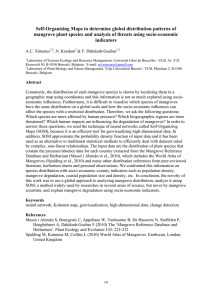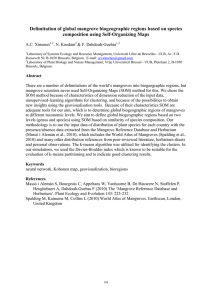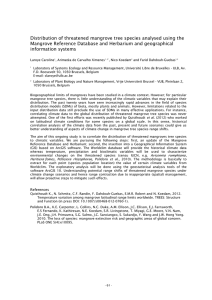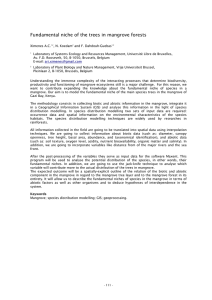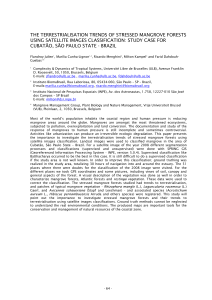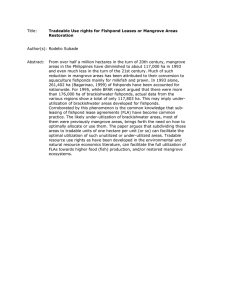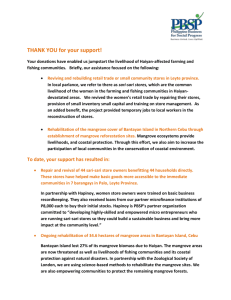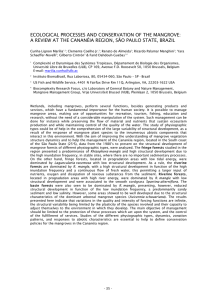Spatial analysis of the socio-economic factors affecting mangrove forests worldwide
advertisement
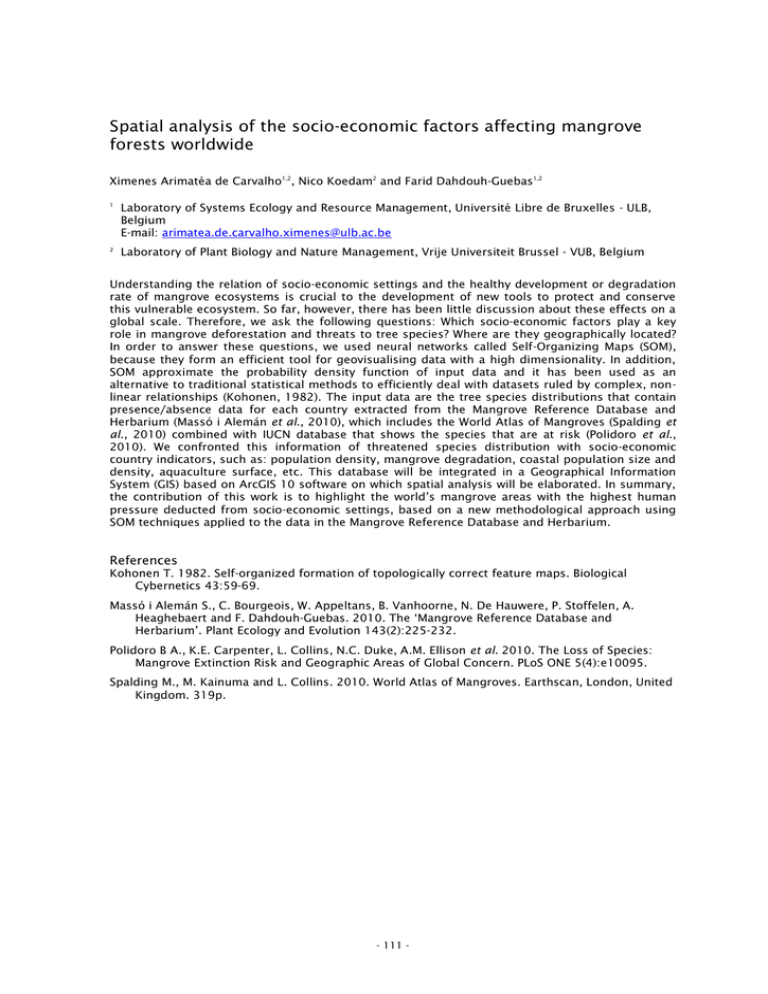
Spatial analysis of the socio-economic factors affecting mangrove forests worldwide Ximenes Arimatéa de Carvalho1,2, Nico Koedam2 and Farid Dahdouh-Guebas1,2 1 Laboratory of Systems Ecology and Resource Management, Université Libre de Bruxelles - ULB, Belgium E-mail: arimatea.de.carvalho.ximenes@ulb.ac.be 2 Laboratory of Plant Biology and Nature Management, Vrije Universiteit Brussel - VUB, Belgium Understanding the relation of socio-economic settings and the healthy development or degradation rate of mangrove ecosystems is crucial to the development of new tools to protect and conserve this vulnerable ecosystem. So far, however, there has been little discussion about these effects on a global scale. Therefore, we ask the following questions: Which socio-economic factors play a key role in mangrove deforestation and threats to tree species? Where are they geographically located? In order to answer these questions, we used neural networks called Self-Organizing Maps (SOM), because they form an efficient tool for geovisualising data with a high dimensionality. In addition, SOM approximate the probability density function of input data and it has been used as an alternative to traditional statistical methods to efficiently deal with datasets ruled by complex, nonlinear relationships (Kohonen, 1982). The input data are the tree species distributions that contain presence/absence data for each country extracted from the Mangrove Reference Database and Herbarium (Massó i Alemán et al., 2010), which includes the World Atlas of Mangroves (Spalding et al., 2010) combined with IUCN database that shows the species that are at risk (Polidoro et al., 2010). We confronted this information of threatened species distribution with socio-economic country indicators, such as: population density, mangrove degradation, coastal population size and density, aquaculture surface, etc. This database will be integrated in a Geographical Information System (GIS) based on ArcGIS 10 software on which spatial analysis will be elaborated. In summary, the contribution of this work is to highlight the world’s mangrove areas with the highest human pressure deducted from socio-economic settings, based on a new methodological approach using SOM techniques applied to the data in the Mangrove Reference Database and Herbarium. References Kohonen T. 1982. Self-organized formation of topologically correct feature maps. Biological Cybernetics 43:59-69. Massó i Alemán S., C. Bourgeois, W. Appeltans, B. Vanhoorne, N. De Hauwere, P. Stoffelen, A. Heaghebaert and F. Dahdouh-Guebas. 2010. The ‘Mangrove Reference Database and Herbarium’. Plant Ecology and Evolution 143(2):225-232. Polidoro B A., K.E. Carpenter, L. Collins, N.C. Duke, A.M. Ellison et al. 2010. The Loss of Species: Mangrove Extinction Risk and Geographic Areas of Global Concern. PLoS ONE 5(4):e10095. Spalding M., M. Kainuma and L. Collins. 2010. World Atlas of Mangroves. Earthscan, London, United Kingdom. 319p. - 111 -
